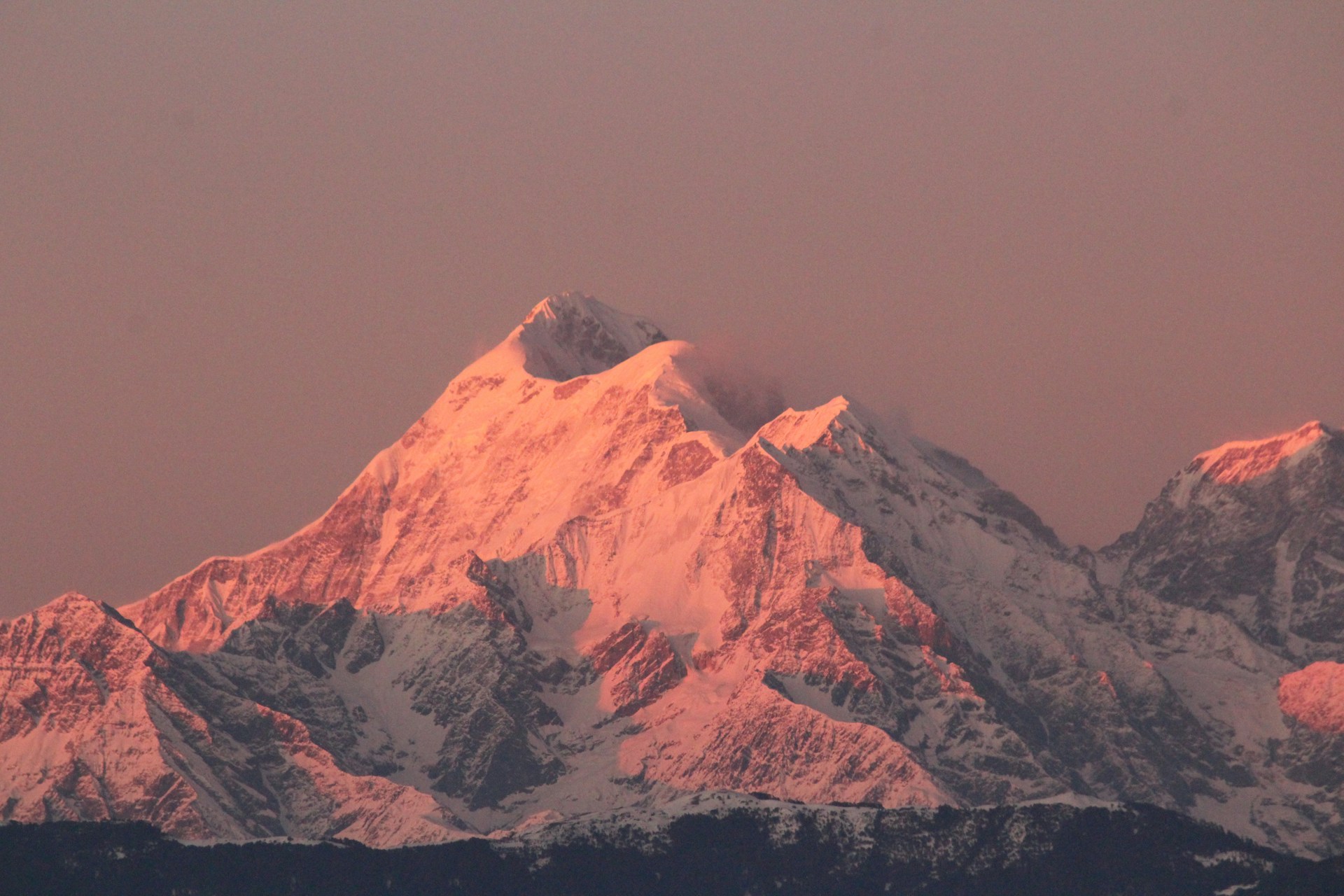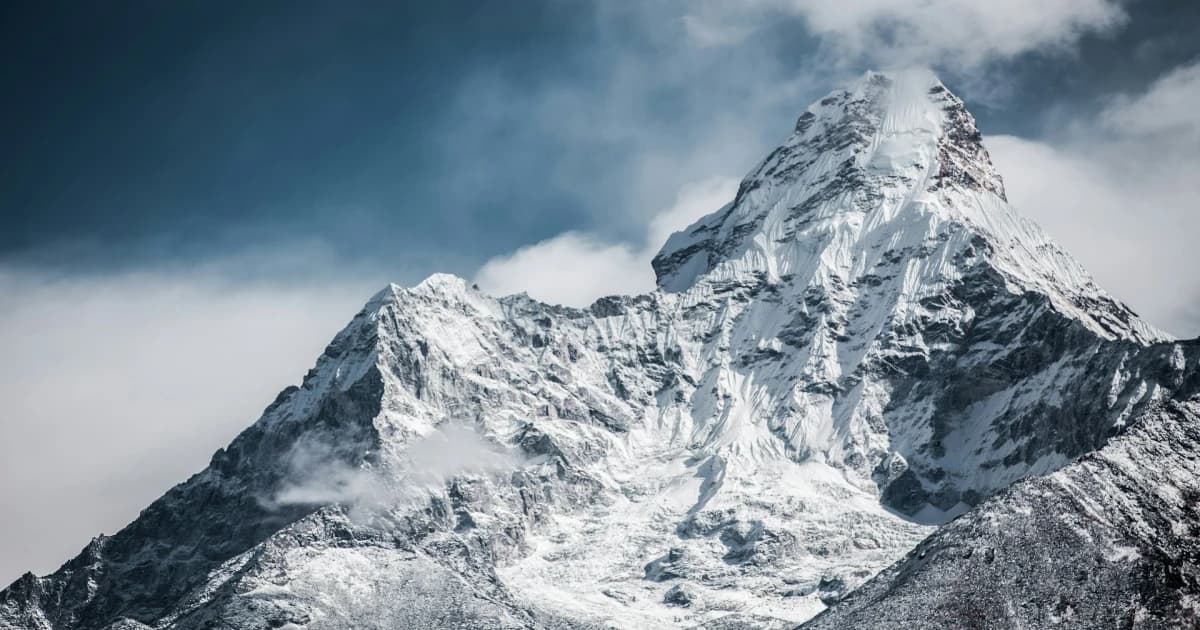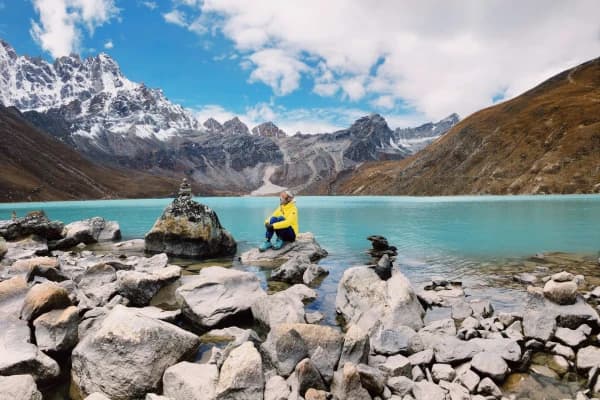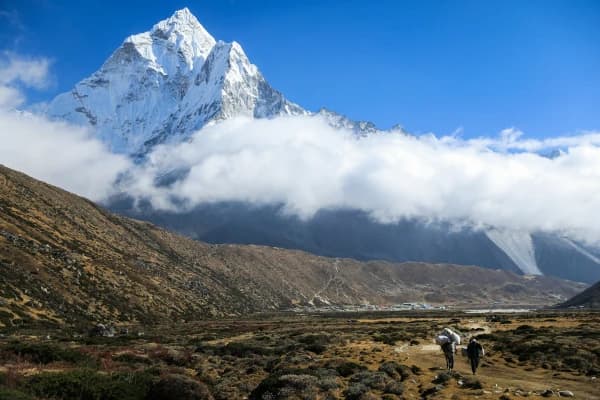Plan your Everest Base Camp adventure with this complete seasonal guide. Learn the best months, weather patterns, and expert tips for an unforgettable trek.
Best Time to Trek Everest Base Camp: Complete Seasonal Guide
Introduction: Best Time to Trek Everest Base Camp
The best time to trek Everest Base Campis one of the most common questions asked by travelers who are dreaming of standing at the foot of the world’s highest mountain. The trek to Mount Everest Base Camp, which is located in the Khumbu Valley of northeastern Nepal, takes you deep into the heart of the Himalayas. At an elevation of about 5,364 meters (17,598 feet), Everest Base Camp provides trekkers with breathtaking mountain scenery, rich Sherpa culture, and unforgettable adventure.
Because the region lies inside Sagarmatha National Park, weather and temperature play a big role in the trekking experience. The most popular trekking seasons for EBC are in spring (March to May)and autumn (September to November). During these months, the skies are clear, the trails are dry, and the breathtaking panoramic Himalayan views are at their best. Trekkers can enjoy comfortable days for hiking and cool nights with fewer weather risks.
You can also go on treks in the winter and the monsoon, but they are harder because of the snow, rain, and low visibility. Picking the right time helps you get used to the high-altitude terrain and keeps you safe while you're trekking through it.
Whether you’re planning the classic Everest Base Camp short trek or the full route to Mount Everest Base Camp, knowing when to go makes all the difference.
Everest Base Camp Weather Overview
The weather at Everest Base Camp changes a lot during the year. The camp is in Sagarmatha National Park, which is about 5,364 meters (17,598 feet) high, so temperatures can drop quickly and conditions can change in a matter of hours. Understanding the weather helps you pick the best time to trek Everest Base Camp safely and comfortably.
General Climate:
-
High-altitude environment: The weather is cold, the air is thin, and the sun is strong during the day.
-
Temperature range: The temperature range is from 12°C to 18°C during the day at lower altitudes and from -6°C to -10°C at night near the base camp.
-
Weather pattern: In the spring and fall, the weather is dry and clear. In the winter, it gets colder. In the summer, it rains.
Seasonal Overview:
-
Spring (March–May):
The skies are bright, the rhododendrons are colorful, and the weather is mild. A time of year when many people go trekking. -
Autumn (September–November):
The weather is stable and the views of the mountains are crystal clear. This is the best time for photography and long hikes. -
Winter (December–February):
The trails are cold and quiet, and the peaks are covered in snow. You can see well, but the nights are very cold (down to -15°C). -
Monsoon (June–August):
Rain, clouds, and leeches on the lower trails. The scenery is lush and green, but flights to Lukla Airport are often late.
Each season offers its own beauty — spring for flowers, autumn for clarity, winter for peace, and summer for greenery. Knowing the conditions helps you decide the best time to trek Everest Base Camp for your comfort, safety, and adventure level.
Spring Season (March–May): Colorful and Clear
Spring is one of the best times to trek Everest Base Camp. From March to May, the weather is mild, the skies are clear, and the trails are filled with color. The snow melts, and the valleys come to life with blooming rhododendrons and lush green forests.
At this time of year, trekkers enjoy some of the best panoramic Himalayan views. Many climbers go to Everest to try to reach the top, so the Mount Everest Base Camp trek becomes bright and lively.

Weather Conditions:
-
Daytime temperature: Around 12°C to 18°C at lower altitudes.
-
Nighttime temperature: Near the base camp, it can drop to -5°C to -10°C.
-
Sky: Mostly clear, with great views of Ama Dablam, Everest, and Lhotse.
-
Trail condition: The trail is dry and easy to walk on, and there are lots of colorful plants along the way.
Why Spring Is Popular:
-
Best visibility and long days for hiking.
-
The Khumbu Valley is beautiful and full of life because of the blooming rhododendrons.
-
A great time to take pictures and learn about Sherpa culture.
-
A lot of people go on expeditions to Everest during this time, which makes the trip more exciting.
Spring is the best time for both new and experienced hikers who want the best mix of weather, scenery, and adventure. If you plan your trek with a reliable travel company in Nepal like Nepal Excursion, you will for sure get top quality services, experienced certified guides, and be on time to make the most of this colorful season in the Himalayas.
Autumn Season (September–November): The Peak Trekking Period
The autumn season, from September to November, is widely known as the best time to trek Everest Base Camp. After the summer monsoon, the air gets crisp and clear, and you can see the mountains in all their glory. The weather is nice, the trails are dry, and the bright blue skies make every step feel like magic.
This period is considered the peak trekking season for the Mount Everest Base Camp trekbecause conditions are almost perfect — not too hot, not too cold, and with little chance of rain or snow.

Weather Conditions:
-
Daytime temperature: Around 10°C to 16°C at lower elevations.
-
Nighttime temperature: The temperature at night can drop to -5°C to -8°C near base camp.
-
Sky: Clear and bright, offering the sharpest panoramic Himalayan views.
-
Trail condition: Dry, safe, and ideal for long hikes.
Why Autumn Is the Best Season:
-
Visibility is crystal clear, making it the perfect time for taking pictures and seeing the sights.
-
Lukla Airport has stable weather, so there are fewer chances of flight delays.
-
There are a lot of trekkers from all over the world in the Khumbu Valley.
-
Best time to go trekking at high altitudes and get used to the weather.
-
Cultural events like Mani Rimdu bring the culture of the Sherpa people to life.
With its balance of comfort, safety, and breathtaking scenery, autumn truly offers the finest trekking conditions in the Everest region.
Winter Season (December–February): Cold but Peaceful
The winter season, from December to February, brings cold temperatures and quiet trails to the Everest Base Camp trek in Nepal. While many trekkers prefer spring or autumn, winter has its own calm beauty — clear skies, peaceful paths, and snow-covered mountains that make the scenery look magical.
This is the best time for people who like to be alone and can deal with the cold. The views of Everest, Lhotse, and Ama Dablam are sharp and beautiful, especially when the sun rises.
Weather Conditions:
-
Daytime temperature: During the day, the temperature in lower areas is between 5 and 10 degrees Celsius.
-
Nighttime temperature: At night, the temperature can drop to -15°C or lower near base camp.
-
Sky: Mostly clear with little rainfall.
-
Trail condition: Dry but snowy or icy at higher altitudes.
Why Trek in Winter:
-
There are fewer trekkers, which means quieter trails and lodges.
-
Some of the best visibility of the year, with crystal-clear views.
-
Great chance for experienced hikers who enjoy trekking at high altitudes.
-
Great for taking pictures of snowy scenes and clear blue skies.
However, the cold can be challenging. Proper gear, warm layers, and careful acclimatization are essential. Flights to Lukla Airport may face occasional delays due to weather.
For those seeking a calm and less-crowded journey, winter offers a truly unique experience.
Monsoon Season (June–August): Green Trails and Rainy Days
The monsoon season, from June to August, is the least busy time for the Mount Everest Base Camp trek. Nepal gets a lot of rain during these months, especially in the lower areas. The trails are full of life, and the forests are full of life. But this time of year also brings cloudy skies, muddy paths, and mountains that are hard to see.
Still, for nature lovers who don’t mind the rain, the monsoon can be a unique and peaceful experience. The hillsides are covered with wildflowers, and waterfalls flow stronger than ever.
Weather Conditions:
-
Daytime temperature: Around 15°C to 20°C at lower altitudes.
-
Nighttime temperature: Between 0°C and 5°C near base camp.
-
Sky: It is often cloudy, but there are short times when the sun comes out.
-
Trail condition: Wet, slippery, and sometimes leech-prone below Namche Bazaar.
What to Expect:
-
Beautiful green scenery and bright landscapes.
-
Very few people trek, which makes for a quiet and personal trip.
-
There may be delays at Lukla Airport because of clouds or rain.
-
In the afternoon, you might not be able to see the mountains very well.
The best time to trek Everest Base Campis usually in spring or autumn, but monsoon trekking has its own charm for adventurous travelers.
Seasonal Tips, Gear & Final Thoughts
The Everest Base Camp trek in Nepal is great any time of year, but you need to be ready for the weather to change to have a safe and fun trip. Planning and packing the right way can make a big difference, whether you walk under bright spring skies or through quiet winter trails.

Seasonal Tips for Trekkers:
-
Spring & Autumn: Carry lightweight layers, a windproof jacket, and sunscreen for sunny days. These are the best times to trek Everest Base Camp because the weather is stable and views are clear.
-
Winter: In the winter, bring extra warm clothes, gloves, and boots that keep your feet warm. Get ready for cold nights and snowy trails.
-
Monsoon:Wear clothes that won't get wet, rain covers, and fabrics that dry quickly. Before the afternoon rains, start your hike in the morning.
Essential Gear Checklist:
-
Trekking boots with good grip
-
Warm sleeping bag (rated for -15°C or lower)
-
Waterproof jacket and pants
-
Thermal layers and fleece
-
Trekking poles and headlamp
-
Refillable water bottle and purification tablets
-
First-aid kit and personal medicines
Final Thoughts:
The right season for you depends on how comfortable and adventurous you are. Spring and fall have the best mix of weather and scenery, while winter and the monsoon bring peace and quiet. No matter what time you go, always make plans, get in shape, and go with guides you can trust.
Booking your trip with an experienced agency like Nepal Excursion ensures you get safe logistics, expert support, and the best possible experience on your Everest Base Camp trek in Nepal — the journey to the heart of the Himalayas.




